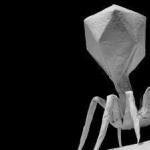All defects, damage and inflammation of the inner ear are associated with damage to the sound-perceiving apparatus.
Inner ear defects can be congenital or acquired. Birth defects occur when exposed to the mother's body adverse factors(intoxication, infection, trauma to the fetus), disrupting the normal course of embryonic development. In most cases, congenital defects of the inner ear include underdevelopment of the receptor hair cells of the entire organ of Corti or its individual sections. In place of the hair cells, a tubercle is formed from nonspecific epithelial cells, and sometimes the main membrane is completely smooth. Depending on the degree of damage to the organ of Corti, hearing loss will be complete or partial.
Acquired defects are associated with damage to the structures of the inner ear during childbirth as a result of compression and deformation of the fetal head by narrow birth canal or when pathological childbirth. In young children, damage to the inner ear can occur when the head is bruised during a fall from a height.
inflammation of the inner ear(labyrinthitis) is less common than the middle ear, almost always a complication of otitis media or a severe general infectious disease.
Most often labyrinthitis occurs during the transition of purulent inflammatory process from the middle ear through the oval or round fenestra inner ear. With chronic purulent otitis media the infection can pass through the pus-damaged bone wall separating the middle ear from the inner ear if outflow is obstructed purulent exudate from tympanic cavity. In some cases, inflammation of the labyrinth is caused not by microbes, but by their toxins. Under the influence of purulent exudate, the membranes of the oval and round windows swell, and they become permeable to bacterial toxins. Inflammation in this case proceeds without suppuration and usually does not lead to the death of the nerve elements of the inner ear. Therefore, complete deafness does not occur, but a significant decrease in hearing is often observed due to the formation of scars and adhesions in inner ear.
Inflammation of the inner ear can also be caused by other causes. In the early childhood with epidemic cerebrospinal meningitis (purulent inflammation meninges) the infection can penetrate into the inner ear from the side of the meninges along the sheaths of the auditory nerve, which passes in the internal auditory canal. Sometimes labyrinthitis develops due to infection by blood flow with general infectious diseases(measles, scarlet fever, parotitis or pig, etc.).
According to the prevalence of the inflammatory process, diffuse (diffuse) and limited purulent labyrinthitis are distinguished. With diffuse purulent labyrinthitis, the organ of Corti completely dies, the cochlea is filled with fibrous connective tissue, complete deafness occurs.
With a limited labyrinthitis, the purulent process affects only part of the organ of Corti, there is a partial hearing loss for certain tones, depending on the location of the lesion in the cochlea.
Complete or partial deafness that arose after a purulent labyrinthitis turns out to be resistant, because the dead nerve cells Corti's organ is not restored.
With labyrinthitis, the inflammatory process can go to vestibular apparatus, in addition to hearing impairment, the patient has nausea, vomiting, dizziness, loss of balance
As already mentioned, the labyrinth fluid and the main membrane belong to the sound-conducting apparatus. However, isolated diseases of the labyrinthine fluid or the main membrane almost never occur, and are usually accompanied by a violation of the function of the organ of Corti as well; therefore, almost all diseases of the inner ear can be attributed to the defeat of the sound-perceiving apparatus.
Defects and damage to the inner ear. To Birth defects include developmental anomalies of the inner ear, which can vary. There were cases of complete absence of the labyrinth or underdevelopment of its individual parts. In most congenital defects of the inner ear, underdevelopment of the organ of Corti is noted, and it is precisely the specific terminal apparatus of the auditory nerve, the hair cells, that is not developed. In place of the organ of Corti, in these cases, a tubercle is formed, consisting of nonspecific epithelial cells, and sometimes this tubercle does not exist, and the main membrane turns out to be completely smooth. In some cases, underdevelopment of hair cells is noted only in certain parts of the organ of Corti, and in the rest of the length it suffers relatively little. In such cases, it may be partially preserved auditory function in the form of islands of hearing.
In the occurrence of congenital developmental defects auditory organ all sorts of factors disturbing the normal course of development of the embryo are important. These factors include the pathological effect on the fetus from the mother's body (intoxication, infection, trauma to the fetus). A certain role can be played by hereditary predisposition.
Damage to the inner ear, which sometimes occurs during childbirth, should be distinguished from congenital developmental defects. Such injuries may be the result of compression of the fetal head by narrow birth canals or a consequence of the imposition of obstetric forceps during pathological childbirth.
Damage to the inner ear is sometimes observed in young children with head bruises (falling from a height); at the same time, hemorrhages into the labyrinth and displacement of individual sections of its contents are observed. Sometimes in these cases both the middle ear and the auditory nerve. The degree of hearing impairment in the case of injuries of the inner ear depends on the extent of the damage and can vary from partial hearing loss in one ear to complete bilateral deafness.
Inflammation of the inner ear (labyrinthitis) occurs in three ways: 1) due to the transition of the inflammatory process from the middle ear; 2) due to the spread of inflammation from the meninges and 3) due to the introduction of infection by blood flow (with common infectious diseases).
At purulent inflammation middle ear infection can enter the inner ear through a round or oval window as a result of damage to their membranous formations (secondary tympanic membrane or annular ligament). In chronic purulent otitis media, the infection can pass into the inner ear through the bone wall destroyed by the inflammatory process, which separates the tympanic cavity from the labyrinth.
From the side of the meninges, the infection enters the labyrinth, usually through the internal auditory meatus along the sheaths of the auditory nerve. Such a labyrinthitis is called meningogenic and is observed most often in early childhood with epidemic cerebrospinal meningitis (purulent inflammation of the meninges). It is necessary to distinguish cerebrospinal meningitis from meningitis of ear origin, or the so-called otogenic meningitis. The first is an acute infectious disease and gives frequent complications in the form of damage to the inner ear, and the second itself is a complication of purulent inflammation of the middle or inner ear.
According to the prevalence of the inflammatory process, diffuse (diffuse) and limited labyrinthitis are distinguished. As a result of diffuse purulent labyrinthitis, the organ of Corti dies and the cochlea is filled with fibrous connective tissue.
With limited labyrinthitis, the purulent process does not capture the entire cochlea, but only part of it, sometimes only one curl or even part of the curl.
In some cases, with inflammation of the middle ear and meningitis, it is not the microbes themselves that enter the labyrinth, but their toxins (poisons). The inflammatory process that develops in these cases proceeds without suppuration (serous labyrinthitis) and usually does not lead to the death of the nerve elements of the inner ear.
Therefore, after a serous labyrinthitis, complete deafness usually does not occur, however, a significant decrease in hearing is often observed due to the formation of scars and adhesions in the inner ear.
Diffuse purulent labyrinthitis leads to complete deafness; the result of a limited labyrinthitis is a partial loss of hearing for certain tones, depending on the location of the lesion in the cochlea. Since the dead nerve cells of the organ of Corti are not restored, deafness, complete or partial, that arose after a purulent labyrinthitis, is persistent.
In cases where, with labyrinthitis, the vestibular part of the inner ear is also involved in the inflammatory process, in addition to impaired auditory function, symptoms of damage to the vestibular apparatus are also noted: dizziness, nausea, vomiting, loss of balance. These phenomena are gradually subsiding. With serous labyrinthitis, the vestibular function is restored to one degree or another, and with purulent labyrinthitis, as a result of the death of receptor cells, the function of the vestibular analyzer completely drops out, and therefore the patient remains uncertain in walking for a long time or forever, a slight imbalance.
May be a congenital or lifelong developmental anomaly auricle. congenital aplasia auricle is called anotia and occurs in 1 newborn out of 18 thousand. Congenital rudimentary, underdeveloped earlobes are often combined with deformation of the entire auricle and are the result of a violation of the processes of embryogenesis. Loss of the lobe or auricle as a result of trauma (mechanical, thermal, chemical) refers to acquired defects of the outer ear.

General information
Absence of a lobe or whole ear may be a congenital or acquired in the course of life anomaly in the development of the auricle. Congenital aplasia of the auricle is called anotia and occurs in 1 out of 18 thousand newborns. Congenital rudimentary, underdeveloped earlobes are often combined with deformation of the entire auricle and are the result of a violation of the processes of embryogenesis. Loss of the lobe or auricle as a result of trauma (mechanical, thermal, chemical) refers to acquired defects of the outer ear.
The auricle (auricula) consists of an elastic C-shaped cartilage covered with skin and a lobe. The degree of development of the cartilage determines the shape of the ear and its protrusions: a free curved edge - a curl (helix) and an antihelix (anthelix) located parallel to it; the anterior protrusion - the tragus (tragus) and the antitragus (antitragus) lying behind it. The lower part of the auricle is called the lobe or lobule (lobula) and is a progressive characteristic of a person. The earlobe is devoid of cartilage tissue and consists of skin and adipose tissue. Normally, the C-shaped cartilage is a little more than 2/3, and Bottom part- lobe - a little less than 1/3 of the total height of the auricle.
Underdevelopment or complete absence auricle is one of the most severe anomalies in the development of the ear. The absence of a lobe, part or whole ear can be unilateral or bilateral and is often associated with other congenital anomalies of the face: underdevelopment mandible, soft tissues of the cheek and zygomatic bones, transverse cleft of the mouth - macrostomy, syndrome of the 1st-2nd gill arches. Complete aplasia of the auricle, characterized by the presence of only the earlobe or a small skin-cartilaginous roller. In this case, there may be a narrowing or overgrowth of the ear canal, the presence of parotid skin and cartilage appendages, parotid fistulas, etc. The absence of the external ear may be an independent defect not associated with other organs, or occur simultaneously with independent malformations of the kidneys, heart, limbs, etc. d.
The congenital absence of the external ear is usually associated with underdevelopment of the cartilaginous skeleton of the auricle and, to one degree or another, is accompanied by a developmental disorder. internal cavities ear, providing the function of conducting sound. However, the absence of the external ear in no way affects the intellectual and physical abilities of children.
Classification of anomalies in the development of the outer ear
Existing options for classifications congenital anomalies development of the auricles are built taking into account the degree of underdevelopment of the outer ear.
The gradation system of underdevelopment of the auricles according to Tanzer proposes to classify variants of congenital defects from stage I (complete anotia) to stage IV (protruding ear).
Classification according to the Aguilar system considers the following options for the development of the auricles: Stage I - normal development auricles; Stage II - deformation of the auricles; Stage III - microtia or anotia.
The three-stage classification according to Weierd is the most complete and distinguishes the stages of the defect of the auricles, depending on the degree of need for their plastic reconstruction.
Stages of underdevelopment (dysplasia) of the auricles according to Weierd:
- Dysplasia I degree- most anatomical structures auricle can be recognized. When conducting reconstructive operations there is no need for additional cartilage and skin. Dysplasia of the I degree includes macrotia, protruding ears, weak and moderately expressed deformities of the ear cup.
- Dysplasia II degree- only separate parts of the auricle are recognizable. Additional skin and cartilage implants are required for partial reconstruction through plastic surgery. Dysplasia of the II degree includes pronounced deformities of the auricles and microtia (small ears).
- Dysplasia III degree- it is impossible to recognize the structures that make up the normal auricle; the undeveloped ear resembles a shriveled lump. This grade requires a complete reconstruction using significant skin and cartilage implants. Variants of grade III dysplasia are microtia and anotia.
Reconstructive otoplasty in the absence of a lobe or ear
Such defects in the development of the auricles, such as the absence of a lobe or external ear, require complex reconstructive plastic surgery. This is the most time-consuming and labor-intensive otoplasty option, presenting high requirements to qualification plastic surgeon and carried out in several stages.
Of particular difficulty is the complete reconstruction of the outer ear in case of its congenital absence (anotia) or in case of loss due to trauma. The process of reconstructing the missing auricle is carried out in 3-4 stages and takes about a year.
The first stage includes the formation of the cartilaginous framework of the future ear from the costal cartilages of the patient. At the second stage, the automaterial (cartilaginous base) is placed in a subcutaneous pocket specially formed in place of the missing ear. The implant should take root in a new place within 2-6 months. During the third stage, the cartilaginous base of the future ear is disconnected from the adjacent tissues of the head, moved to the required position and fixed in the correct position. The wound in the ear area is covered with a skin graft taken from the patient himself (from the arm, leg or abdomen). At the last stage, the natural recesses of the auricle and tragus are formed. Thus, in the newly reconstructed ear, all the anatomical elements inherent in the normal auricle are present.
And although it is impossible to restore hearing during reconstructive otoplasty, the new ear created by surgeons allows patients to experience themselves and feel in a new way. the world. The shape of the ear created in the process of reconstructive otoplasty practically does not differ from the natural one.
Reconstructive otoplasty in children with no external ear is possible not earlier than 6-7 years of age. With bilateral hearing loss, early hearing aids are indicated (wearing hearing aid) so that there is no delay in mental and speech development. In some cases, with bilateral hearing defects, surgical intervention is performed on the inner ear. Alternative way solutions cosmetic problem the absence of the external ear, which is widespread abroad, is the wearing of a specially made removable prosthesis of the auricle.
In the absence of an earlobe, operations are also performed to restore it. For this purpose, skin grafts taken from the behind the ear or neck area are used. With competent and technical correct execution such an operation postoperative scars practically invisible.
Despite the successes achieved by the reconstructive plastic surgery in the field of solving the problem of the absence of a lobe and the outer ear, the search for new materials and methods of otoplasty is currently ongoing for the most natural reproduction of such an organ as complex in form and function as the auricle.
What parent doesn't want their child to be born perfectly healthy? Unfortunately, although not often, it happens that the formation of the body is not entirely correct, which can result in various congenital pathologies.
One of these defects is microtia - insufficient development or complete absence of the auricle. it rare feature, which occurs, according to various estimates, in one of 6-10 thousand people. As a rule, it is unilateral, usually on the right side, less often on the left side, but in ~ 10% of cases, bilateral (bilateral) microtia occurs.
results scientific research, as well as the practice of plastic and ENT surgeons, they see that in about half of the cases the problem is combined with other violations of facial proportions, and almost always with atresia (partial or complete absence) of the ear canal and middle ear structures.
Causes of Microtia
The etiology of this phenomenon has not yet been studied. Many theories have been put forward, in particular - damage blood vessels, rubella and taking thalidomide during pregnancy - but none of them was confirmed. The study of the "genetic" side of the issue showed that hereditary factor, possibly, but in any case is not decisive.
Also, in the medical literature, it is separately emphasized that microtia is not the result of an incorrect lifestyle of parents during childbearing. No matter what "bad" one does future mom during this crucial period - alcohol, caffeine, nicotine, stress, etc. - this can not be a reason to blame yourself for what happened.
Features of the problem, classification of degrees of microtia
Depending on the condition of the auricle and its individual segments, there are the following types microtia:
| Degree | Symptoms | A photo |
| I | Slightly reduced auricle with existing ear canal, which, however, is somewhat narrower than normal | |
| II | Partially underdeveloped auricle with absent or very narrow external auditory canal, accompanied by partial hearing loss | |
| III | The auricle is rudimentary, i.e. looks like a rudiment of a normal ear. Missing external auditory canal and tympanic membrane | |
| IV | Complete absence of the auricle (anotia) |
With unilateral microtia, the second ear usually works and grows normally, but the child needs to be constantly monitored for development healthy organ to warn in time possible appearance bilateral deafness. It should also increased attention refers to colds to avoid ear infection and further hearing loss.
Microtia treatment, reconstructive surgery
The only one, but quite effective option solutions to the aesthetic part of the problem - partial or complete surgical reconstruction of the auricle. This is a complex multi-step procedure that can take up to a year and a half or more. It is performed by a plastic, reconstructive or ENT surgeon.
As a rule, such an operation consists of 4 stages, the sequence and execution techniques of which may vary slightly:
- Formation of the cartilaginous framework of the future ear. The most suitable material is a fragment of a rib or a healthy ear of the patient himself. In addition to own tissues, it is possible to use other materials: donor cartilage, silicone, polyamide thread, polyacryl, etc. With some advantages of using foreign implants (the possibility of reconstructing the frame before surgery, which reduces the duration of the procedure), high probability their rejection, donor - earlier, artificial - later. Therefore, an implant from one's own tissues will be preferable to a foreign one.
- Formation of a subcutaneous pocket in the area of an absent or damaged (underdeveloped) auricle, into which an already formed cartilage frame is placed. The engraftment of the frame occurs within 4-6 months.
- From the formed ear block, the base of the auricle is created, it is given the necessary anatomical position.
- At the last stage, the formed ear block is lifted to recreate the auricle, the tragus is reconstructed using a skin-cartilaginous implant taken from a healthy ear. In the behind-the-ear region, an unaesthetic defect may form, which closes with a free skin fold. This stage also takes 4 to 6 months.
| Photos before and after the reconstruction of the auricle with microtia: | |
 |
|
 |
|
 |
During recovery period a number of complications characteristic of this operation are possible: asymmetry between the healthy and reconstructed ear, reduction of scar tissue and, as a result, graft distortion, etc. Similar problems solved by simple repetition surgical intervention. In addition, throughout life, the reconstructed ear will need to be carefully protected from any traumatic effects.
The treatment of microtia involves not only the creation of an auricle that would not visually differ from the natural one, but also the preservation of hearing. Therefore, if there is a possibility of functional restoration of the ear canal, then such an operation is performed first, and then the outer ear is also restored. The most difficult case for correction is the complete absence of the auricle - anotia.
Contraindications for surgery
Factors excluding the possibility of reconstructive surgery for microtia are mainly general surgical:
- the age of the patient is up to 6 years (moreover, despite the fact that by this age the auricle is already considered to be fully formed, not all surgeons undertake to operate on patients before adulthood);
- blood clotting disorders;
- diabetes;
- exacerbation of chronic diseases;
- cardiovascular diseases.
The final word always rests with the attending physician, who will take into account general state patient, the degree of manifestation of microtia and possible surgical risks.
Congenital malformations of the ear—both external and internal—have always been presented to humans. serious problem. Medicine solves it through surgical intervention only in the last century and a half. External anomalies are eliminated with the help of external surgical correction. Malformations of the inner part of the ear apparatus require more complex surgical solutions.
The structure and functions of the human ear - types of congenital ear pathologies
It is known that the configuration and relief of the auricle of a person is as unique and individual as his fingerprints.
The human ear apparatus is paired organ. Inside the skull, it is located in the temporal bones. Outside it is limited by auricles. The ear apparatus performs in the human body difficult task auditory and vestibular organ at the same time. It is designed to perceive sounds, as well as to keep the human body in spatial balance.
The anatomical structure of the human auditory organ includes:
- external - auricle;
- average;
- internal.
Today, out of every thousand newborn babies, 3-4 children have one or another anomaly in the development of the hearing organs.
The main anomalies in the development of the ear apparatus are divided into:
- Various pathologies of the development of the auricle;
- Defects in the intrauterine formation of the middle part of the ear apparatus varying degrees gravity;
- Congenital damage to the inner part of the ear apparatus.
Anomalies in the development of the outer ear
The most common anomalies concern, first of all, the auricle. Such congenital pathologies are visually distinguishable. They are easily detected when examining a baby, not only doctors, but also the parents of the child.
Anomalies in the development of the auricle can be divided into:
- those in which the shape of the auricle changes;
- those that change its dimensions.
Most often, congenital pathologies to varying degrees combine both a change in the shape and a change in the size of the auricle.
The change in size may be in the direction of increasing the auricle. This pathology is called macrotia. microtia called a reduction in the size of the auricle.
Changing the size of the auricle up to its complete disappearance is called annotia .
The most common defects with a change in the shape of the auricle are as follows:
- The so-called "macaque ear". At the same time, the curls in the auricle are smoothed out, almost reduced to nothing. The upper part of the auricle is directed inward;
- Lop-earedness. Ears with such a malformation have a protruding appearance. Normally, the auricles are parallel temporal bone. With protruding ears, they are at an angle to it. The greater the angle of deviation, the greater the degree of prominence. When the auricles are located at a right angle to the temporal bone, the protruding ear defect is expressed to the maximum extent. To date, about half of newborns have protruding ears of a greater or lesser degree;
- The so-called "ear of a satyr". In this case, the pulling of the auricle upwards is pronounced. In this case, the upper tip of the shell has a pointed structure;
- VRdressedaplasia of the auricle, also called anotia, is the partial or complete absence of the pinna on one or both sides. More common in children with genetic diseases- such as gill arch syndrome, Goldenhar syndrome and others. Also, children can be born with anotia, whose mothers had viral infectious diseases during pregnancy.
 Aplasia of the auricle can manifest itself in the presence small education from skin and cartilage tissue or in the presence of only the lobe. The ear canal in this case is very narrow. Fistulas can form in parallel in the parotid region. With absolute anotia, that is, the complete absence of the auricle, the auditory canal is completely overgrown. With such an organ, the child cannot hear anything. Surgery is required to free the ear canal.
Aplasia of the auricle can manifest itself in the presence small education from skin and cartilage tissue or in the presence of only the lobe. The ear canal in this case is very narrow. Fistulas can form in parallel in the parotid region. With absolute anotia, that is, the complete absence of the auricle, the auditory canal is completely overgrown. With such an organ, the child cannot hear anything. Surgery is required to free the ear canal.
In addition, there are such anomalies as skin outgrowths on them in the form of processes of various shapes.
The most appropriate age for children to undergo surgery for ear anomalies is from five to seven years.
Congenital pathologies of the middle ear - varieties

Congenital defects in the development of the middle part of the ear apparatus are associated with the pathology of the eardrums and the entire tympanic cavity. More common:
- deformation eardrum;
- the presence of a thin bone plate at the site of the eardrum;
- complete absence of the tympanic bone;
- a change in the size and shape of the tympanic cavity up to a narrow gap in its place or the complete absence of a cavity;
- formation pathology auditory ossicles.
With anomalies of the auditory ossicles, as a rule, the anvil or malleus are damaged. The connection between the tympanic membrane and the malleus may be broken. With pathological intrauterine development of the middle part of the ear apparatus, deformation of the malleus handle is typical. The complete absence of the malleus is associated with the attachment of the tympanic membrane muscle to the outer wall of the ear canal. Wherein Eustachian tube may be present, but there is also its complete absence.
Intrauterine pathologies of the formation of the inner ear
Congenital anomalies in the development of the inner part of the ear apparatus occur in the following forms:
- pathology of initial severity expressed in wrong development organ of Corti and auditory cells. In this case, hearing loss may be affected. peripheral nerve. The tissues of the organ of Corti may be partially or completely absent. This pathology limitedly affects the membranous labyrinth;
- pathology medium degree gravity, when diffuse changes the development of the membranous labyrinth is expressed in the form of underdevelopment of the partitions between the stairs and curls. In this case, the Reisner membrane may be absent. There may also be an expansion of the endolymphatic canal, or its narrowing due to an increase in the production of perilymphatic fluid. The organ of Corti is present as a vestige, or absent altogether. This pathology is often accompanied by atrophy of the auditory nerve;
- severe pathology in the form of a complete absence- aplasia - the inner part of the ear apparatus. This developmental anomaly leads to deafness of this organ.
As a rule, intrauterine defects are not accompanied by changes in the middle and outer parts of this organ.





